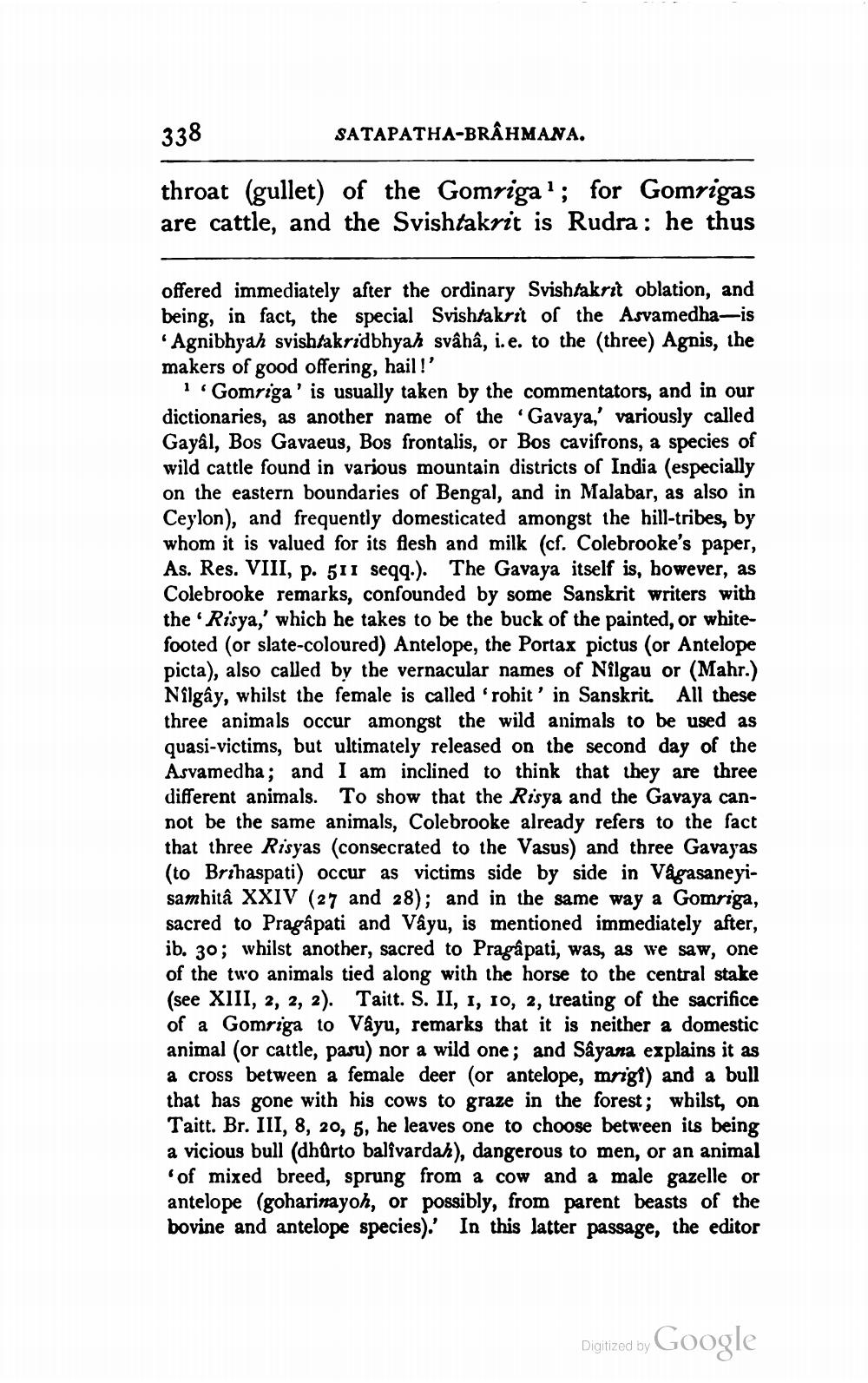________________
338
SATAPATHA-BRÂHMANA.
throat (gullet) of the Gomrigal; for Gomrigas are cattle, and the Svishtakrit is Rudra : he thus
offered immediately after the ordinary Svishtakrit oblation, and being, in fact, the special Svishtakrit of the Asvamedha-is
Agnibhyah svishtakridbhyah svâhâ, i.e. to the (three) Agnis, the makers of good offering, hail!'
1 Gomriga' is usually taken by the commentators, and in our dictionaries, as another name of the Gavaya,' variously called Gayâl, Bos Gavaeus, Bos frontalis, or Bos cavifrons, a species of wild cattle found in various mountain districts of India (especially on the eastern boundaries of Bengal, and in Malabar, as also in Ceylon), and frequently domesticated amongst the hill-tribes, by whom it is valued for its flesh and milk (cf. Colebrooke's paper, As. Res. VIII, p. 511 seqq.). The Gavaya itself is, however, as Colebrooke remarks, confounded by some Sanskrit writers with the 'Risya,' which he takes to be the buck of the painted, or whitefooted (or slate-coloured) Antelope, the Portax pictus (or Antelope picta), also called by the vernacular names of Nilgau or (Mahr.) Nilgây, whilst the female is called 'rohit' in Sanskrit. All these three animals occur amongst the wild animals to be used as quasi-victims, but ultimately released on the second day of the Asvamedha; and I am inclined to think that they are three different animals. To show that the Risya and the Gavaya cannot be the same animals, Colebrooke already refers to the fact that three Risyas (consecrated to the Vasus) and three Gavayas (to Brihaspati) occur as victims side by side in Vågasaneyisamhitâ XXIV (27 and 28); and in the same way a Gomriga, sacred to Pragapati and Vayu, is mentioned immediately after, ib. 30; whilst another, sacred to Pragâpati, was, as we saw, one of the two animals tied along with the horse to the central stake (see XIII, 2, 2, 2). Taitt. S. II, 1, 10, 2, treating of the sacrifice of a Gomriga to Väyu, remarks that it is neither a domestic animal (or cattle, pasu) nor a wild one; and Sayana explains it as a cross between a female deer (or antelope, mrigi) and a bull that has gone with his cows to graze in the forest; whilst, on Taitt. Br. III, 8, 20, 5, he leaves one to choose between its being a vicious bull (dhûrto balivardal), dangerous to men, or an animal
of mixed breed, sprung from a cow and a male gazelle or antelope (goharinayoh, or possibly, from parent beasts of the bovine and antelope species). In this latter passage, the editor
Digitized by Google




